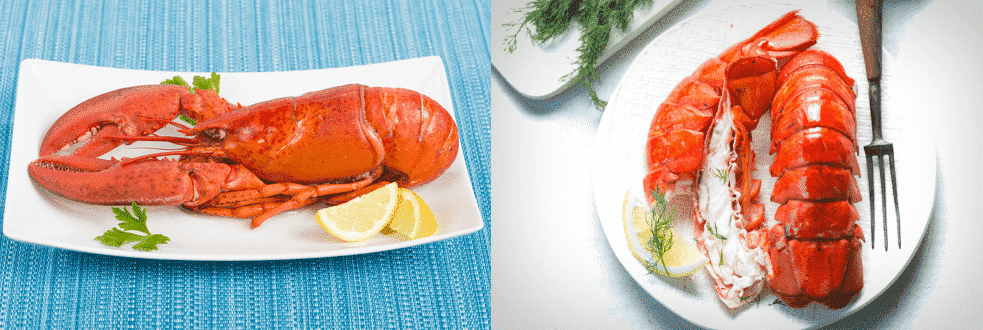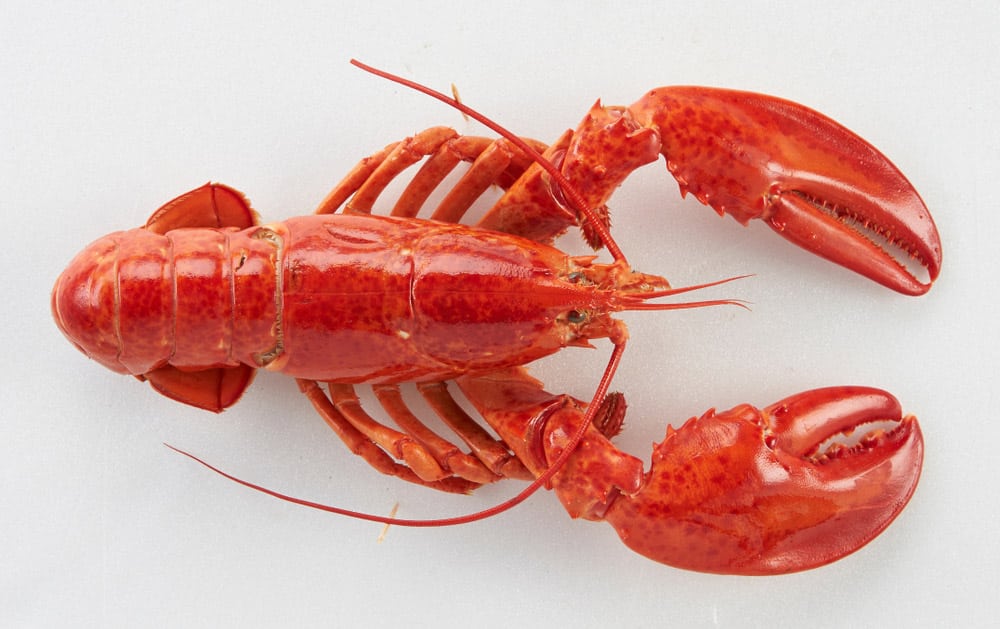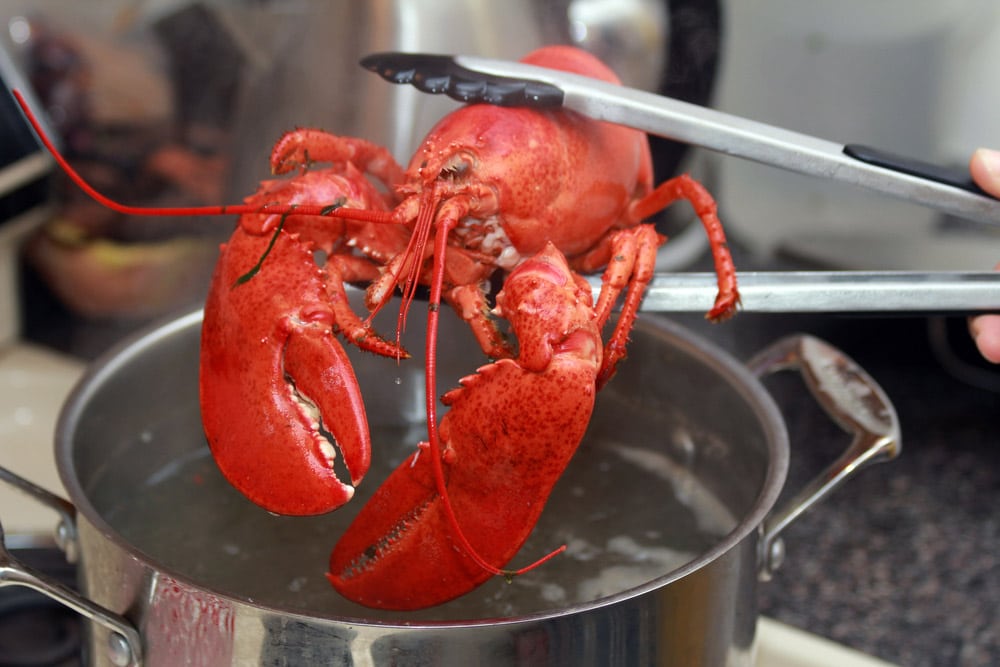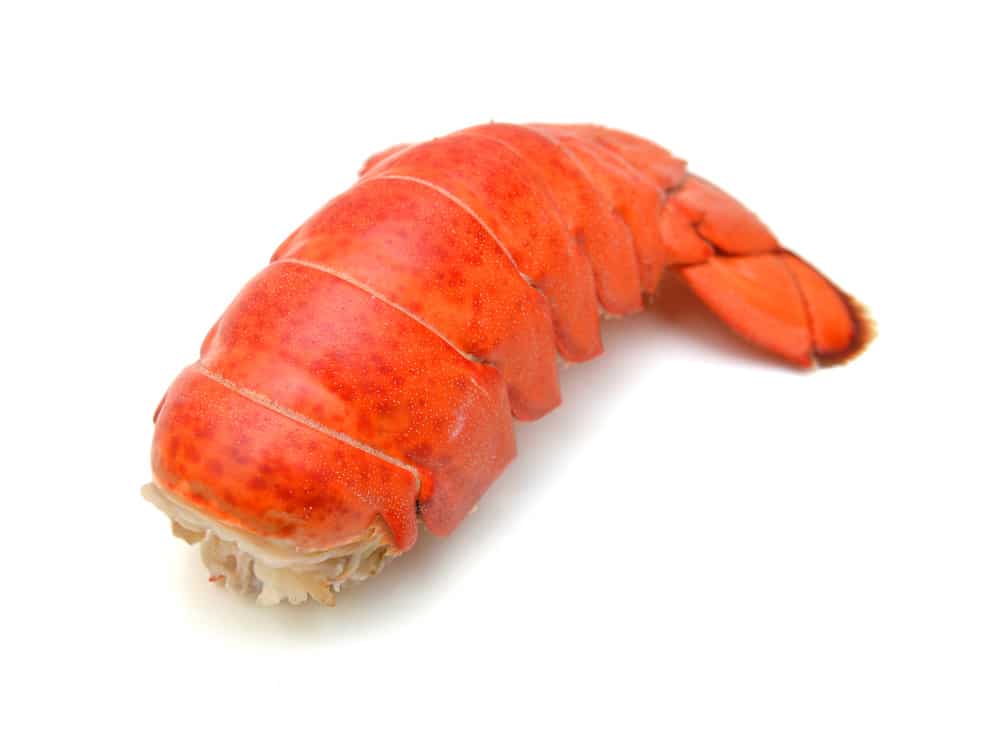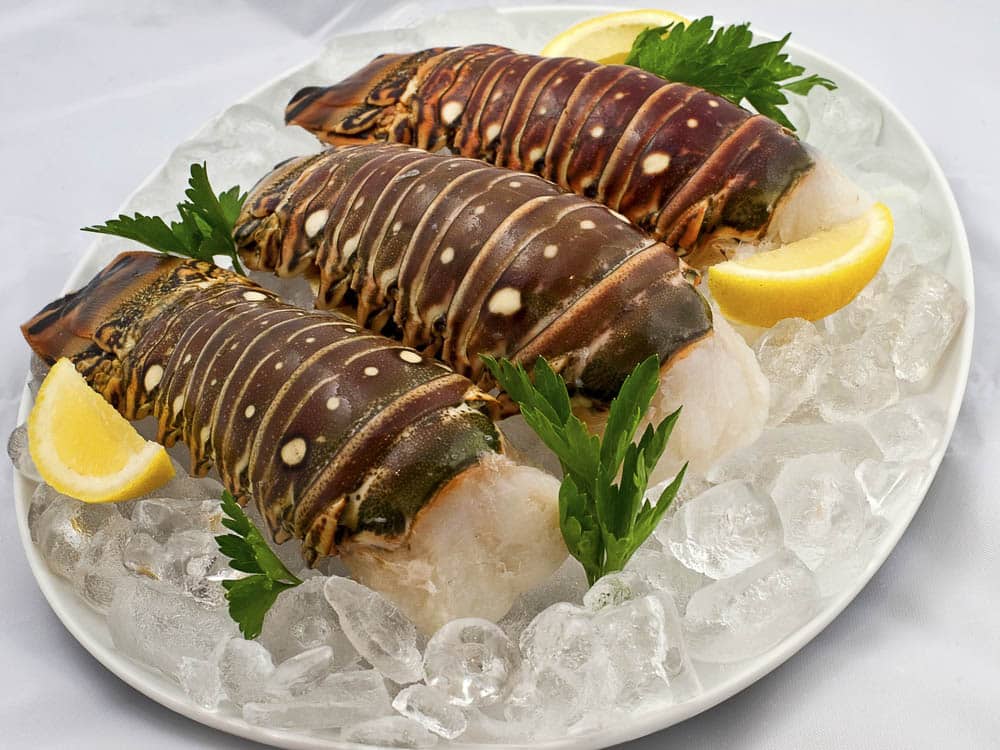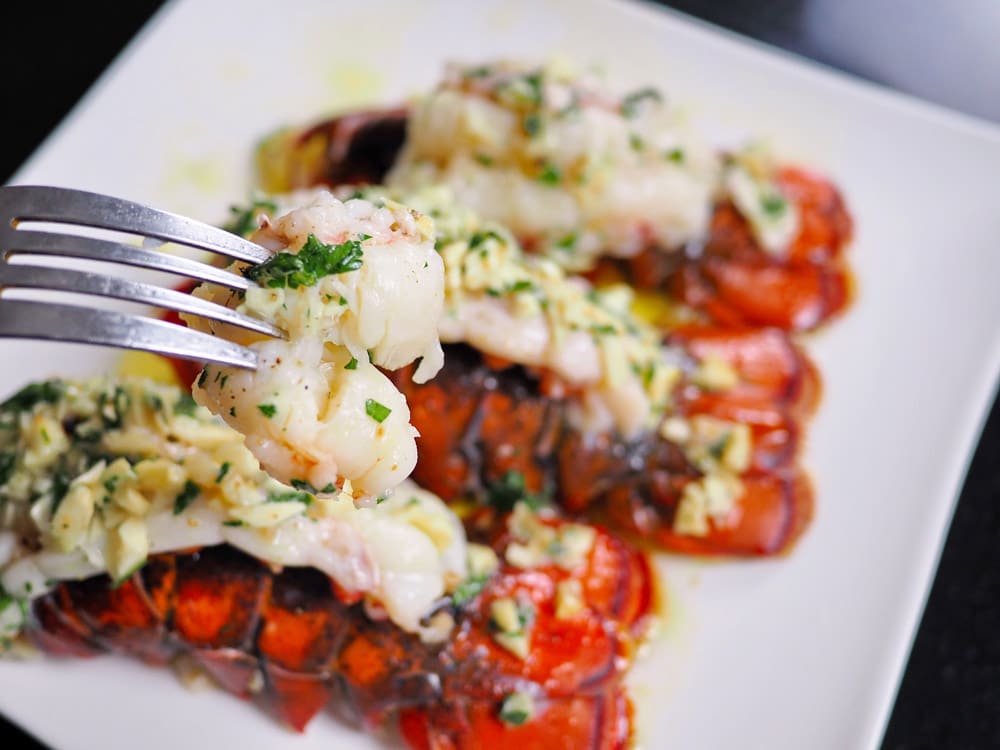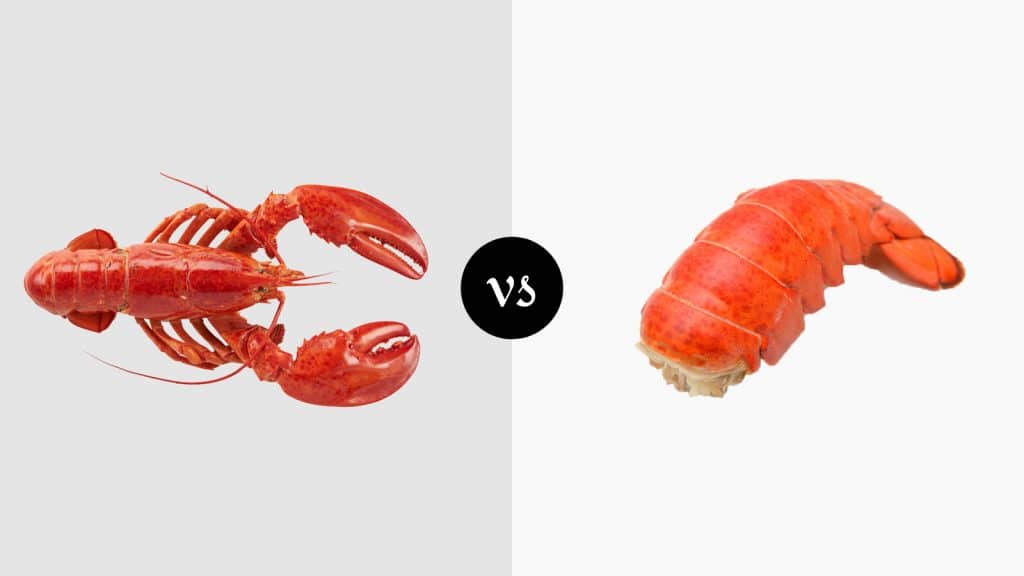
Seafood is something that is eaten all over the world. It’s favored in just about every given county. Various forms of seafood have become highly common, but out of the many options available, lobster easily arises as one of the most sought-after gourmet foods.
Shellfish, as a whole, may be popular, but nothing quite compares to the exclusivity of lobster. There are two main varieties of lobster that are on sale across the world, namely whole lobster and lobster tail.
These are also two key foods that many struggle to decide between. Even though whole lobster has its place, many people prefer lobster tail due to being easier to prepare and eat.
We’ll be taking you through a comprehensive comparison of whole lobster vs lobster tail so that you know exactly which type of high-end shellfish is best for your preferences and habits. There’ll be no confusion over which is the better buy after we clarify all the differences.
Whole Lobster Vs Lobster Tail Comparison
| Whole Lobster | Lobster Tail | |
|---|---|---|
| Taste | Purest Lobster Flavor - Sweet Mildly Fish Crustacean Taste - Flavor That's Midway Between Crab & Shrimp | Similar But Meatier And Sweeter Than Shrimp - The Best Flavor Out Of All Lobster Flesh |
| Texture | Firm, Chewy & Meaty With Melt In Your Mouth Biteability - Texture Varies Depending On Part Of Lobster | Perfect Midway Point Between Succulent And Firm - The Ideal Texture Out Of All Lobster |
| Affordability | $35 - $120 / Pound | $50 / Pack Of Two Tails |
| Difficulty | Easy | Moderate (Requires Exact Timing) |
| Cooking Time | 10 - 20 Minutes | 1 Minute Per Ounce |
| Versatility | Supremely Versatile | Very Versatile |
| Availability | Fresh Only, Certain Inland Areas Do Not Have Whole Lobster Available | Fresh & Frozen |
| Health | Healthiest Due To Always Being Prepared Fresh | Frozen Lobster Comes With Risk Of Contamination |
Whole Lobster Vs Lobster Tail
No matter what type is chosen or which manner of preparation is picked out, lobster is lobster, and it always comes out tasting great. There are, however, distinct differences that will help you make your mind up.
Let’s take a close look at whole lobster vs lobster tail and explore all of each type’s main characteristics.
Whole Lobster
A whole lobster grants room for spectacular presentation while rewarding with ample flesh that can be slightly tricky to eat for newcomers to this quintessential shellfish delicacy. Here is a breakdown of all the defining characteristics of whole lobster as compared to lobster tail.
What Does Whole Lobster Taste Like?
The flavor of whole lobster and the taste of lobster tail is identical if the lobster tail is sold fresh, which it usually isn’t.
While the tail has the purest, sweetest flavor, whole lobster is best described as a mildly fishy crustacean flavor that’s similar to a midway point between the sweetness of a crab and shrimp, just with flatter bitterness and a sweet taste that lingers more.
Texture
As the whole lobster consists of the entire body of the animal, this obviously includes the tail too. The tail is supremely firm and chewy with a meaty texture that holds its form more than the other flesh.
The chewy and crunchy claws are just as sought after and carry a similar texture that’s a little flakier. Each different part of the lobster’s body will grant flesh with a different degree of firmness, but anything other than the tail and pincers is typically melt-in-your-mouth soft.
Affordability
Whole lobster and lobster tail generally cost the same price unless the lobster tail is sold alone and fresh instead of frozen. US shoppers can expect to pay in the region of $35 to $120 per pound. Larger lobsters cost more than small lobsters as there is more flesh to obtain easily.
Cooking Difficulty
Whole lobster is generally a little easier to cook than lobster tail because the entire lobster is, in most cases, boiled for a fixed duration that guarantees that each part of the lobster is properly cooked.
How Long Does It Take To Cook Whole Lobster?
Whole lobster needs to boil for between 10 to 20 minutes, depending on its size. One begins timing the cooking from the moment that the water hits boiling point and begins to bubble after placing the lobster into the pot.
You’re looking at roughly 5 to 6 minutes for a one-pound lobster and 8 minutes to 10 minutes for a 1 1/4 to 1 1/2 pound lobster. A two-pound lobster cooks in 11 to 12 minutes, and a three-pound lobster boils for roughly 13 to 14 minutes.
Steaming times are slightly longer. Add two minutes of additional steaming for each weight class.
Versatility
The tail and claws contain the most meat, but the body and head also contain tasty edible lobster flesh, which technically makes whole lobster more versatile than lobster tail.
Most chefs retain the claws and tail for serving alone while resorting to using the flesh from the rib section and rest of the body for cooking into dishes that include lobster.
Availability
The availability of whole lobster depends on where you live. Those near the coast will inadvertently have greater access to fresh whole lobster. This being said, whole lobster is scarcer than frozen lobster tails, which are generally available everywhere.
Health
The health aspect of both whole lobster and lobster tails is something that’s very important to compare for one big reason.
When most shellfish are killed, bacteria are quickly released within their body during the period immediately following their death which completely ruins their nutritional properties and instead introduces negative, potentially harmful contaminants.
The only way to prevent this is to boil the lobster as it is killed or freeze it instantly after it has been slaughtered.
Lobster Tail
There are many chefs that prefer the simplicity of preparing what is largely considered to be the best part of a lobster, its tail alone. Our breakdown of all the defining characteristics of lobster tail presents everything that you need to know to make up your own mind.
What Does Lobster Tail Taste Like?
The lobster tail is easily the most desirable part of the entire lobster. That’s because it arguably has the best taste out of all and even has a delectable texture.
This taste can be best defined as similar to shrimp, but at the same time a lot meatier with a sweeter forerunning flavor note that serves at its defining characteristic.
Texture
The texture of lobster tail is the most sought-after part of the whole lobster. It offers the ideal midway point between shape-retaining firmness and melt-in-your-mouth softness.
Expect both firmness and chewiness that’s comparable to a midway between a large, perfectly cooked prawn and a shrimp.
Affordability
A two-pack of frozen lobster tails (the minimum generally sold) costs roughly $50 in the US. That’s two six to seven-ounce tails, which equate to slightly more expensive than whole lobster even though it’s frozen, not fresh.
Cooking Difficulty
Lobster tail is generally more difficult to cook than whole lobster. Firstly, one has to typically contend with carefully defrosting the tail first because most lobster tails are sold frozen.
Secondly, lobster tail overcooks easily. Timing the cooking period wrong can be catastrophic to the final result, leaving the flesh extremely tough and rubbery.
How Long Does It Take To Cook Lobster Tail?
Lobster tails require one minute of cooking per ounce of weight. As soon as the meat turns white, the lobster is done. If it is translucent to any degree, it needs to be cooked more.
Versatility
The flesh of lobster is what is used in cooking which makes lobster tail pretty versatile as it contains the most meat. This being said, whole lobster leaves meat in the body, which can be used without “damaging” the instant appeal of serving a whole tail or claws.
Lobster tail is, therefore, technically slightly less versatile than buying a whole lobster which awards meat that can be extracted from the body for use in various recipes.
Availability
Frozen lobster tails are available throughout the year and in just about every region. One doesn’t need to be situated nearby to the coast in order to procure a frozen lobster tail.
Health
As we mentioned in reference to whole lobster, lobster flesh begins excreting bacteria rather rapidly from the moment that they die.
This means that if lobster tail isn’t obtained very fresh and cooked quickly, there’s a risk of contamination which in a best-case scenario will spoil the taste and, in a worst-case scenario, make the person eating it extremely sick.
Frozen lobster tail should always be procured from a reputable brand so that the shopper can rest assured that proper handling procedures were followed for all of the tails.
What Is The Difference Between Whole Lobster And Lobster Tail?
The main difference between whole lobster and lobster tail is that whole lobster is typically sold fresh, whereas lobster tails are mainly available frozen.
Whole lobster also has more meat overall, whereas lobster tail is largely considered to be the best tasting flesh with the best texture as well.
Which Is Best, Whole Lobster vs Lobster Tail
When it comes to choosing a winner between whole lobster vs lobster tail, it all depends on whether the lobster tail is fresh or not.
Fresh lobster tail is almost always preferred to whole lobster, but whole lobster is always better than frozen lobster as long as it, of course, is fresh.
Although frozen lobster is generally shunned by those looking for the best flavor and safest method of preparation, it is crucial that all cooks remember to lull their fresh lobster into a deep sleep by placing them into a freezer for twenty minutes before boiling them alive.
This is the only manner of preparation that grants a degree of humaneness to cooking fresh lobster.
